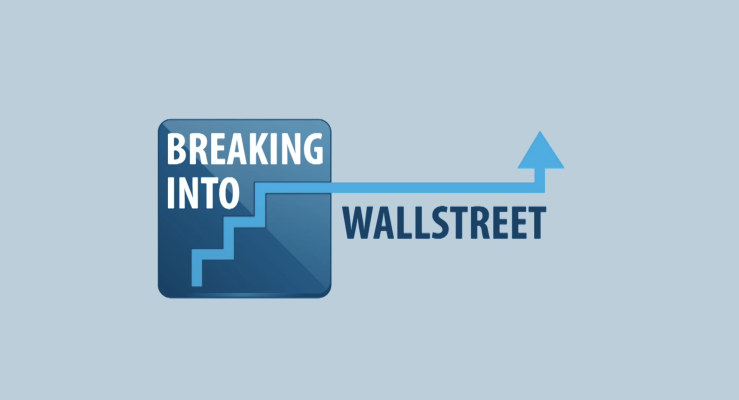Breaking Into Wall Street – The Ultimate Real Estate Financial Modeling Course

Evaluate property developments and acquisitions
You’ll assess the risks and rewards and make investment recommendations
Master financial modeling
You’ll build office, retail, hotel, industrial, multifamily, and pre-sold condo models
Complete 11 case studies
Build 6 shorter “crash course” models and 5 detailed “on the job” ones
There are many “real estate financial modeling courses” out there, but most training make 3 big mistakes:
Mistake #1: Convoluted Models – Complex models can be nice, but when you’re completing case studies in an interview setting, no one will ask you for a 5,000-row Excel model. And when you’re on the job, shorter, simpler models are more useful if you need a quick reference that you can re-purpose for your current task.
Mistake #2: No Real-Life Integration – There’s no point in building a model unless you can use it for something in real life, such as advising a client or deciding whether to invest in a property acquisition or development. “Real estate theory” is as interesting as that 600-page textbook collecting dust in the corner of your room.
Mistake #3: No Plan for Efficient Preparation – You might only have a weekend to prepare, or you might have 2 months before your new job starts. So, any training should offer plans that match your personal situation and available time.
The correct approach – the one our course uses – is based on real-life case studies given in interviews.
We don’t teach 5,000-row Excel models that require 30 hours to understand; we teach what you need to know to complete case studies.
That means the models in this course are in the “intermediate” zone, with each one taking up between 50 and 300 rows in Excel (the “on the job” case studies are more complex, but still possible to finish within a reasonable time frame).
This approach lets you learn the concepts and finish in a few hours – without getting overwhelmed by minutiae.
We created this course by gathering dozens of case study examples from students who had been through interviews at all types of real estate firms: real estate private equity, real estate developers, real estate lenders, and real estate-focused banks.
Then, we synthesized the most useful parts of their case studies and experiences.
Our approach focuses on the 3 most important points in Real Estate Modeling:
1) Cash Flow Projections – You need to understand how to move from a property’s tenants, rents, expenses, and debt and equity to its cash flows – and model the changes over time on the pro-forma.
This means not only incorporating assumptions for rent and expense increases but also factoring in different patterns for debt repayments and maturities and the interest paid on debt.
2) Individual Lease Analysis – This point makes real estate fundamentally different from corporate finance: You analyze specific leases and the related terms, such as rent-free months, tenant improvements (TIs), concessions, leasing commissions (LCs), absorption/turnover vacancy, and expense reimbursements, and link revenue and expenses to these terms.
You also need to understand issues such as renewal probabilities and modeling uncertain periods of downtime when searching for a new tenant.
3) Investment Recommendations – Finally, you must understand how to combine everything to make an investment recommendation. That means reading the numbers in the different cases, assessing the risk factors, and saying “Yes” or “No” to a deal.
No other training on the market puts together all the pieces quite like this because they’re too busy teaching confusing models or presenting an “academic approach” based on theory rather than practice.
This course has 11 case studies ranging from 30 minutes to 4 hours, so you can get a lot out of the training – whether you have 3 days or 3 months to prepare.
Through these case studies, you’ll learn to:
- Project cash flows for different property types, from multifamily (apartments) to offices, retail, industrial, hotels, and pre-sold condominium units.
- Understand the timeline of real estate development projects, from the debt, equity, and capitalized interest to the construction loan refinancing and eventual exit.
- Build the key drivers for property models, from Cap Rate assumptions to rent/expense growth, renewal probabilities, vacancies, and the required CapEx, tenant improvements (TIs), and leasing commissions (LCs).
- Model the cash flows from specific tenants with varied lease terms, including support for the loss to lease, absorption & turnover vacancy, concessions & free rent, expense reimbursements, percentage rent, and specific TIs and LCs (with support for reserve accounts).
- Calculate the key metrics for real estate assets, including the equity IRR and cash-on-cash multiple, the Debt Yield, the Interest Coverage Ratio, the Debt Service Coverage Ratio (DSCR), and the Recovery percentages for lenders in downside/stressed cases.
- Size the Debt based on Loan-to-Value (LTC) or Loan-to-Cost (LTC) targets and model features such as Interest-Only Periods, TI/LC Holdbacks, Accrued/PIK Interest, and variable principal repayments.
- Assess property renovations, including the possible uplift in average rents, occupancy rates, or the Average Daily Rate (ADR) for hotels, and how they impact the financing and potential returns.
- Build waterfall returns schedules that “split up” the deal proceeds based on performance; these are based on IRR or multiple tiers and include support for preferred and catch-up returns, “lookback” terms, and more.
- Estimate deposits over multiple sale and construction phases for pre-sold condominium developments and learn how upfront sales reduce the risk for the developers.
- Make investment recommendations based on each deal’s expected returns and the key risk factors.
If you want to answer interview questions, complete case studies with ease, and leap up the ladder once you start working, this is the course for you.
![]()
Brian DeChesare
Founder, Breaking Into Wall Street
Here’s What You’ll Get When You Sign Up for This Real Estate Modeling Course:
 Short Case Studies and Modeling Tests
Short Case Studies and Modeling Tests

WHY IT’S IMPORTANT: This training gets you up to speed quickly with cash flow projections and property modeling and gives you a “weekend plan” if you only have a few hours to learn the ropes.
In this module, you will get an introduction to Real Estate Financial Modeling, and you’ll practice the key skills with 6 short case studies across the main property and deal types.
That includes 2 office acquisitions, an industrial development model, a hotel acquisition, a pre-sold condo development case study, and a multifamily acquisition.
These case studies are all short (30, 60, or 90 minutes) so you can get results and practice your financial modeling skills without overly complicated models or documents.
You can complete this module in a weekend and feel confident and prepared for your interview by Monday morning.
 Office Development Case Study
Office Development Case Study

WHY IT’S IMPORTANT: These lessons walk you through a more complex development model, including monthly projections and more flexible refinancing/exit dates and scenarios.
In this module, you will complete a 4-hour real estate development modeling test for an office property in the City of London (100 Bishopsgate). You will expand on the simplified 90-minute version in the introductory module and build in support for a monthly schedule with flexible refinancing and exit dates and multiple scenarios.
You will also add support for tenants with different lease types, calculate returns to both the equity and mezzanine investors, build a mixed IRR/multiple-based waterfall schedule, and add support for the Lookback Provision using VBA code.
Finally, you’ll answer the case study questions, make an investment recommendation for each investor group, quantify the risk factors, and explain how to mitigate them.
 Hotel Acquisition & Renovation Case Study
Hotel Acquisition & Renovation Case Study

WHY IT’S IMPORTANT: This module delves into the nuances of hotel modeling, including the trade-offs for “franchise” vs. “independent” scenarios and the risk factors in renovation projects.
In this case study, you’ll complete a 2-hour hotel acquisition and renovation modeling test based on a 5-star resort in Dubai, the Jumeirah Beach Hotel.
You’ll start by setting up assumptions for different market and operational scenarios, including Base, Upside, and Downside cases and Independent vs. Franchise cases, and you’ll use them to build a Pro-Forma for the property.
Then, you’ll set up the acquisition, exit, and financing assumptions, project the Debt service, calculate the returns to the equity investors, and set up sensitivity tables to analyze the deal outcome under varied assumptions.
Finally, you’ll make an investment recommendation, identify the key risk factors and their mitigants, and comment on the Independent vs. Franchise choice and the terms of the Permanent Loans.
 Multifamily Acquisition & Credit Case Study
Multifamily Acquisition & Credit Case Study

WHY IT’S IMPORTANT: You’ll learn all about real estate lending in this case study, from how to assess the potential returns to the downside risk for the senior, mezzanine, and preferred lenders in different scenarios.
In this case study, you will build a multifamily acquisition and credit analysis model and make an investment recommendation for the Senior Loan, Mezzanine, and Preferred Equity used to fund the deal.
You’ll start by building a standard Pro-Forma for The Lyric, a 234-unit multifamily property in Seattle, and you’ll add support for the acquisition, exit, and debt assumptions.
Then, you’ll calculate the returns and recovery percentages for the lender groups in different scenarios and exit dates, and you’ll create sensitivities to “stress test” the deal.
Finally, you will build a DCF to value the property, evaluate comparable properties and a Replacement Cost analysis, and answer case study questions about the debt and equity, the operating assumptions, the risk factors, and the valuation.
 Office/Retail Acquisition & Renovation Case Study
Office/Retail Acquisition & Renovation Case Study

WHY IT’S IMPORTANT: This case study lets you “level up” your lease modeling skills with support for more advanced features in the monthly projections and a waterfall schedule with preferred and catch-up returns.
In this case study, you will build an acquisition and renovation model for a mixed-use office/retail property and make investment recommendations for the Limited Partners, General Partners, Senior Lenders, and Mezzanine Investors.
You’ll start by setting up the transaction assumptions for 45 Milk Street, a 61,000-square-foot property in Boston, and then you’ll build a monthly and annual Pro-Forma that supports different lease types, start dates, and expiration dates (including support for Percentage Rent leases for retailers).
Then, you’ll project the Debt Service, including a TI/LC/CapEx Holdback released on a monthly basis, and you’ll calculate the returns to each investor and lender group.
In the Waterfall Returns Schedule, you will build in support for Preferred and Catch-Up Returns, and you’ll create sensitivity tables to analyze different outcomes.
Finally, you’ll use the model to make an investment recommendation for each group and explain how to mitigate the risk factors – or, for negative recommendations, what must change for the deal to work.
 Pre-Sold Condo Development Case Study
Pre-Sold Condo Development Case Study

WHY IT’S IMPORTANT: This module expands on the pre-sold condo development in Module 1 and walks you through more complex development phases and a mixed IRR/multiple-based waterfall schedule.
In this case study, you will build a condo development model for the Heritage Cyrela, a super-high-end luxury complex in São Paulo. You will then use the model to make investment recommendations for the Limited Partners and Developers and identify the key risk factors in the deal.
You’ll start by setting up the transaction assumptions and the construction timeline, including the monthly pre-sales of condo units in each phase.
Then, you’ll project Gross Sales based on initial, construction-end, and final deposits, and you’ll forecast the Hard Costs, Soft Costs, FF&E and Move-In Costs, and Land Acquisition Costs.
You’ll use this monthly cash flow model to project Equity and Debt draws, interest, and principal repayment, and then you’ll build a Waterfall Returns Schedule with a Preferred Return, Catch-Up Return, and tiers based on a mix of IRRs and equity multiples.
Finally, you’ll create an annual summary, Sources & Uses schedule, and sensitivity tables to summarize everything and answer the case study questions.
 Certification Quiz
Certification Quiz

WHY IT’S IMPORTANT: This end-of-course certification quiz lets you test your knowledge and prove it to employers.
This quiz consists of 39 challenging questions that are all based on the case studies in the course.
If you pass the quiz with a 90% score (no restrictions on time or the number of attempts), you’ll gain our Certificate in Real Estate Modeling, which you can add to your LinkedIn profile and present in interviews.
Plus… This Course Comes With The Following Valuable Tools To Accelerate Your Learning:

Full Subtitles and Transcripts
365-Day-per-Year Q&A
Study Plans, Notes, and a 200-Page Guide
Free Updates
Watchable on ANY Device
Expert Support
Practice Quizzes with Full Answer Keys
Plus Expert Support from Experienced Finance Professionals
Just moments after you enroll, you’ll gain Instant Access to the Real Estate Modeling course.
But that’s not the best part.
The best part is expert support for a full 5 years after purchase!
If there’s anything that you don’t understand, just go to the “Question/Comment” area below each lesson and ask your question there.
These comments are monitored and responded to by our expert support team – every one of whom has personal experience working on deals at finance firms.
That ensures that you’ll get responses from people with deep experience in the field – not a clueless high school temp clutching the “Help Desk” manual.
This personalized, expert support is one of the things that sets Breaking Into Wall Street apart and gets you to your goals faster.
You can often learn just as much from reading other students’ questions and our responses as you will from the lessons themselves!
Our 1-on-1 coaching rate is $200+ per hour. But when you invest in the Real Estate Modeling course, personal support is included for FREE.
NOTE: There are some limitations to these support services. For example, we cannot complete models, case studies, or homework assignments for you.
We also cannot provide play-by-play support with an earpiece during interviews.
Finally, we cannot answer questions about topics not covered in these courses, such as sales & trading interview questions.
We’re happy to answer career-related, qualitative, and technical questions that are related to the course materials.
What’s Your Investment In This Real Estate Modeling Course?
To put this in context, let’s look at your Return on Investment in this course…
Real estate is a huge field with varied roles and firm types, so the pay varies quite a bit – but it’s safe to say that:
a) Entry-level compensation at commercial real estate (CRE) firms and CRE lending firms is in the $80,000 – $90,000 range, rising to $175,000 – $300,000 in the mid-levels and $500K+ above that.
b) And in real estate private equity, you start in the $100,000 – $200,000 range and move up to the $500,000 – $1 million range at the upper levels.
And each senior professional at these firms had to start in an entry-level role to get their foot in the door – just like you today.
We could sell each component of this course separately for $97 each, for a total of $679, but since we want you to get “the full package,” we’re discounting it to just $247.
Compared with your potential upside – jobs that pay well into the six-figure range – your investment in the course is nominal.
By investing just $247 in this course, you’re greatly improving your chances of landing a job that pays upwards of $100,000 in Year 1 – that’s more than a 400x return on investment!
Even if this training only helps you win an internship, that’s still at least $10,000 USD at any reputable firm, for a 40x ROI.
There is no other way to get this level of training… this level of on-demand support… this level of testing and case study practice… and this level of access to a community of thousands of peers…
…at ANY price!
So yes, you have to invest in yourself to gain access to this specialized real estate training, but it will be one of the smartest, highest-return investments you ever make – we guarantee it!
We’ve bent over backward to deliver the best, most comprehensive program on the market that gives you everything you need to land a great job and start a long-term career in real estate, whether you want to work at a developer, a brokerage firm, a lender, a private equity firm, or anything else.
To date, over 56,763+ people have invested in BIWS training and gone on to secure lucrative jobs in the industry. I want you to be next, and I want to make this a “no-brainer” decision for you.
Here’s What Will Happen Within a Few Short Moments of You Joining the Real Estate Modeling Course:
The minute you join, you’ll have access to the complete Real Estate Modeling course, including 56 separate videos, full written notes, transcripts, captions, “Before and After” Excel files for each lesson, the 11 case studies, and a 200-page written guide with explanations of properties, deal types, and waterfall schedules.
And the best part: We’ll be here to guide you every step of the way because your enrollment comes with a full 5 years of expert support. If there’s something you don’t understand, just go to the “Question/Comment” area below each lesson and ask your question, and we’ll respond with a detailed answer.
On top of that, you’ll also get access to free updates over time.
Decision and Action Time
Of course, there are other options for learning this material.
For example, you could complete a course from another provider, buy a generic course on a random e-learning site for $10 or $20… or download some real estate models from a professor or a textbook.
These methods have their merits, but they won’t get you the same results as this course because they’re designed for “generalist” audiences – not people currently interviewing for client or investment-facing roles at real estate firms, lenders, and PE firms.
So, if you want to master cash flow projections, lease modeling, and investment analysis as they are used in these industries and hit the ground running on Day 1 of your internship or full-time job, this training is your best option.
Yes, it is more of an investment than a book or an online course written by monkeys at the keyboard, but ask yourself about the value of your time and interview opportunities.
If you win a coveted interview spot at a top real estate investment firm, such as Blackstone, Carlyle, Starwood, or Brookfield, do you want to “wing it?”
Or do you want to ensure that you’ve prepared in the most comprehensive way possible?
If you’re serious about your future career in real estate, you should not even have to think about this one.
And if you have any doubts, it’s all backed by our no-questions-asked, no-hassle, 90-Day Money-Back Guarantee.
In fact, the ONLY risk is that you might apply for a job or walk into an interview without this course – and lose out to another candidate who has completed it.
The next move is up to you.
You can hope that a real estate firm hires you without knowledge of these topics or the ability to complete case studies and make investment recommendations…
…or you can confidently tell them you’ve completed the most targeted real estate financial modeling training available, based on 11 case studies and authored by finance professionals who have collectively worked on dozens of deals.
I know you’ll make the right choice.
To YOUR success,
![]()
Brian DeChesare
Breaking Into Wall Street Founder
P.S. Remember that you have NOTHING to lose and nearly unlimited upside – your future career in a high-paying industry – to gain. You have a full 90 days to evaluate the program and return it for a full refund if you’re not satisfied.









Reviews
There are no reviews yet.